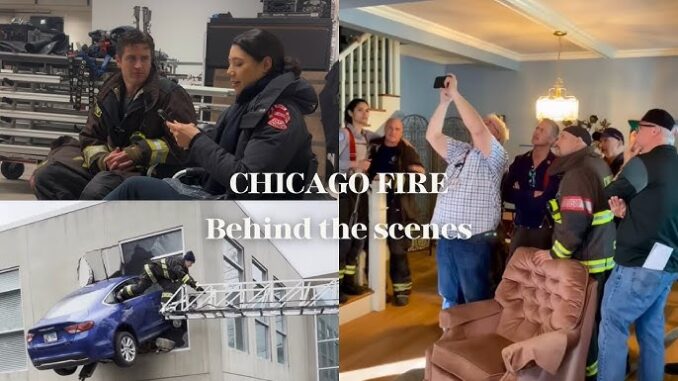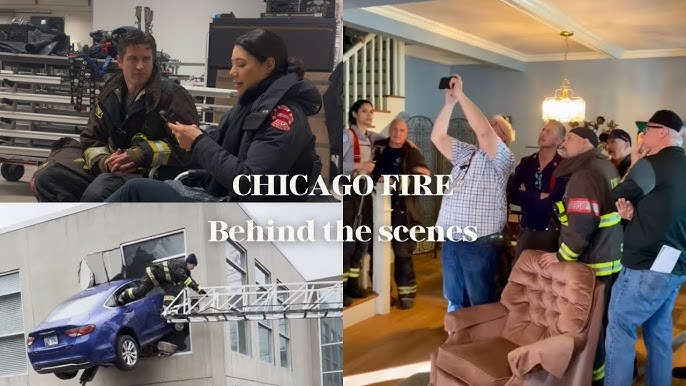
Chicago Fire: Behind-the-Scenes Secrets You Never Knew!
The wail of sirens, the desperate shouts of victims, the heroic rush into infernos – Chicago Fire has captivated audiences for over a decade, pulling us into the high-stakes world of Firehouse 51. Its visceral realism, the palpable sense of danger, and the unwavering camaraderie among its characters make it a cornerstone of the One Chicago universe. But what truly sets this show apart, elevating it beyond mere television drama, are the meticulously crafted secrets burning just beneath its surface – a testament to an unwavering commitment to authenticity that viewers rarely get to see.
Step onto the set, and the first “secret” to hit you isn’t a whisper, but the acrid scent of controlled fire. While many contemporary dramas lean heavily on CGI to conjure their spectacular destruction, Chicago Fire often builds sets with the explicit intention of burning them down. Imagine a three-story house constructed merely to be engulfed in actual flames, meticulously controlled by pyrotechnic wizards and special effects masterminds. This isn’t just about spectacle; it’s about immersion. The heat on the actors’ faces, the smoke stinging their eyes, the genuine crackle and roar of a blaze – these are real stimuli that lend an unparalleled rawness to their performances, translating directly into the tension we feel through our screens. The illusion isn’t just painted; it’s felt, tasted, and smelt, even by proxy.
But the flames are only one part of the blazing truth. Delve deeper, and you uncover the incredible symbiosis between the show’s fictional world and the very real professionals it portrays. This isn’t just a production with “consultants”; it’s a living, breathing partnership. Real firefighters and paramedics from the Chicago Fire Department are not just on standby; they are embedded within the fabric of the show. They meticulously review scripts for accuracy, demonstrate proper protocols, and often stand mere feet from the camera, ensuring that every hose line is held correctly, every piece of turnout gear is donned authentically, and every medical procedure is depicted with clinical precision. This dedication extends to the equipment itself – the gleaming engines, the towering ladders, the specialized rescue tools are often genuine, active-duty apparatus, frequently borrowed directly from the CFD, lending an undeniable heft and legitimacy to every scene.
Then there’s the unspoken choreography of chaos, the intricate ballet of disaster. Forget meticulously storyboarded fight scenes; Chicago Fire orchestrates entire emergency responses. Actors undergo extensive training, learning to navigate smoke-filled rooms, operate high-pressure hoses, and perform intricate rescue maneuvers. Many of the demanding stunts, the breathless climbs, the daring leaps, are performed by the actors themselves, under the watchful eyes of safety coordinators. This commitment isn’t merely for bragging rights; it’s about maintaining a seamless narrative, avoiding the jarring cuts that signal a stunt double, and allowing the audience to fully invest in the characters’ peril. It’s a testament to their dedication that they don the heavy gear, feel the exhaustion, and embody the physical toll of a first responder’s life.
Perhaps the most beloved “secret” is the very city itself, a character as vital as any member of Firehouse 51. Chicago isn’t just a backdrop; it’s the show’s beating heart. The iconic exterior of Engine 18, the real, active firehouse that doubles as Firehouse 51, is a daily reminder of the living, breathing city the show celebrates. Filming often occurs on actual streets, sometimes shutting down bustling intersections, integrating the pulse of urban life directly into the narrative. This deep connection extends beyond aesthetics; the production has become an integral part of the Chicago community, supporting local businesses, employing countless residents, and even inspiring a new generation to consider careers in public service. The show’s authenticity is rooted in its genuine love and respect for the city and its first responders.
So, the next time you hear the sirens of Engine 51 or watch Stella Kidd pull a victim from a wreckage, remember the hidden efforts that make it all so compelling. The controlled explosions, the real firefighters advising on set, the dedicated actors training rigorously, and the city of Chicago itself, all conspire to create a tapestry of truth. These aren’t just “secrets”; they are the foundational elements that elevate Chicago Fire from entertainment to an immersive, illustrative experience, reminding us of the extraordinary courage and unwavering spirit of those who run towards danger when others run away.

